Is it safe to travel to Sonamarg


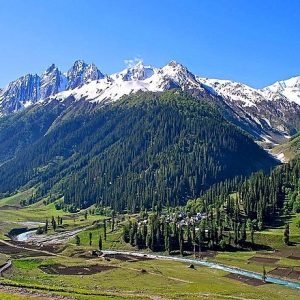

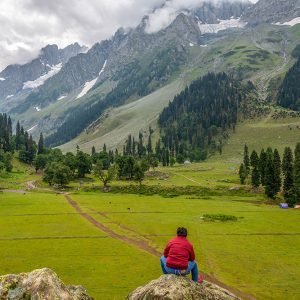
Table of Contents
ToggleLocated in the Ganderbal district of Kashmir, Sonamarg—”Meadow of Gold”—has captivated travelers for centuries with its white-capped mountains, alpine lakes, and green pastures. And while as beautiful as the drive along the Srinagar-Leh Highway is, many potential visitors stop to wonder: is it safe to travel to Sonamarg? In this comprehensive guide, we’ll delve into every aspect of Sonamarg travel safety, from altitude sickness and road conditions to security updates and practical Sonamarg safety tips.
Understanding the Current Security Climate in Sonamarg
The security scenario in Jammu & Kashmir has improved considerably in the last decade. The latest travel guidelines provided by the Government of India’s Ministry of External Affairs indicate that tourism to Sonamarg and its surroundings has been rated as “safe with standard precautions” for both local and foreign tourists. Low-intensity security patrols on the Srinagar-Leh Highway provide round-the-clock monitoring to visitors, ensuring that Sonamarg travel safety is among the top concerns for local authorities. Although sporadic unrest may erupt in the larger Kashmir Valley, the Sonamarg-Gumri section is one of the safest routes with active surveillance.
Key Takeaway: By looking at the Sonamarg travel advisory updates online 1–2 weeks prior to your visit and registering with local tourism offices, you can receive any last-minute travel notices or route changes.
Best Time to Visit Sonamarg for Optimal Safety
Seasonality is key to safe travel to Sonamarg. The Srinagar road opens in late April or early May (depending on snow clearance) and stays open till mid-October:
- May–June (Spring to Early Summer): Melting begins for snow, wildflowers are in bloom, but sporadic late snows may create light travel delays. Road work is usually in progress, so “Sonamarg road conditions” can vary.
- July–August (Monsoon Edge): With light rains, this is tourist season. Dodge heavy rains by tracking Sonamarg weather safety reports.
- September–October (Autumn): Fresh blue skies and cool air are the best looking—and the safest—travels. Always refer to avalanche warnings late in the season.
Pro Tip: Download an offline weather app and receive alerts for heavy rain or snowfall. This simple measure greatly improves Sonamarg travel safety tips.
Navigating Road Conditions & Transportation Safety
The 80 km journey from Srinagar to Sonamarg via National Highway 1D is famous for its beauty—still, no need to do away with caution:
- Narrow Mountain Roads: The road passes through steep slopes and hairpin turns. Travel by day (6 AM–5 PM) to minimize accident risks; night travel is risky because of poor visibility.
- Landslides & Snow Blockages: Especially in early May or late September, landslides or snow avalanches can temporarily block the highway. Local traffic police give live updates—track the “Sonamarg road conditions” feed on social media.
- Vehicle Choice: Use a rugged SUV or 4×4. Private taxis with knowledgeable local drivers are safer than self-driving, especially for first-timers worried about “safe places Sonamarg.”
- Permits & Checkpoints: Carry valid photo ID (passport for foreigners, Aadhaar or driver’s license for Indians). Security checkpoints are routine; delays are usually under 15 minutes if documents are in order.
By planning your departure early, keeping your fuel tank above half, and sticking to daylight hours, you’ll maximize Sonamarg travel safety on the highway.
Altitude Acclimatization & Health Precautions
Sonamarg is situated at about 2,740 m (9,000 ft) above sea level. While lower than Leh, altitude sickness still poses a risk for sensitive travelers. Adhere to the following Sonamarg safety tips to remain healthy:
- Gradual Ascent: Overnight in Srinagar (1,585 m) prior to reaching Sonamarg.
- Hydration & Diet: Consume a minimum of 3–4 L of water per day; abstain from excessive caffeine or alcohol, which might worsen dehydration.
- Medications: Carry a basic first-aid kit with acetazolamide (Diamox) if you’re prone to acute mountain sickness. Consult a physician before travel.
- Rest Days: Don’t schedule strenuous treks or excursions immediately upon arrival. Gentle walks around Thajiwas Glacier are ideal for light acclimatization.
- Recognize Symptoms: Headache, nausea, dizziness, and shortness of breath can signal AMS. Descend immediately if severe symptoms occur.
Taking these precautions makes you experience your trip to Sonamarg in comfort without harming your health.
Weather Safety: Adapting to Kashmir's Alpine Climate
The alpine nature of Kashmir dictates quick weather changes. Adapting to changeable conditions is crucial to ensuring Sonamarg weather safety:
- Layered Clothing: Summers in Sonamarg can also dip to 5 °C at night. Carry thermal base layers, a waterproof outer, and insulated parkas.
- Sun Protection: UV exposure is higher at high elevations. Wear SPF 50 sunscreen, polarized sunglasses, and wide-brimmed hats.
- Rain & Snow Gear: Ponchos or packable rain jackets can shield from unexpected drizzles. In case you are doing glacier treks, pack crampons and gaiters.
- Footwear: Waterproof, ankle-supported hiking boots are a must for walking on rocky trails and river crossings.
By following these Sonamarg safety tips, you can prepare to respond to weather surprises and enjoy the breathtaking views.
Wildlife, Environment, and Responsible Travel
One of the most charming things about Sonamarg is its unspoiled wilderness. But responsible travelers need to respect wildlife and environmental norms:
- Wild Encounters: Himalayan marmots and loose Himalayan black bears live in surrounding forests. Keep at least 50 m distance, don’t feed animals, and keep food safe.
- Eco-Friendly Measures: Do not use single-use plastics; bring back reusable water bottles and biodegradable waste bags. Dispose of trash only at authorized collection sites in Sonamarg bazaar.
- Local Conservation Activities: Participate in village-led initiatives like tree-planting campaigns or river-clean-up camps. This contributes to environmental as well as social health.
Mixing adventure with environmentally friendly practices enhances your safe travel Sonamarg experience while helping maintain its natural beauty for generations to come.
Accommodation & Safe Stay Options
From cozy guesthouses to riverside camps, Sonamarg offers diverse lodging options. When choosing your stay:
- Reputed Hotels & Camps: Opt for properties with verified guest reviews highlighting security measures—24/7 reception, CCTV coverage, and emergency protocols.
- Location Considerations: Riverside tents are picturesque but may risk brisk morning drafts; select sites with insulated flooring and heating facilities.
- Advance Booking: Rooms during peak season get occupied in advance. Advance booking ensures availability of highly rated “safe places Sonamarg”—avoiding last-minute hassles.
- Access to Medical Facilities: Check proximity to the nearest health clinics or army medical centers. Most registered hotels have arrangements for emergency medical evacuation if required.
A considered selection of accommodation not only increases comfort but also consolidates your Sonamarg travel advisory plan in case of emergencies.
Emergency Services & Communication
Communicative ability is a lifeline at far-flung mountain destinations. Prior to travelling to Sonamarg:
- Mobile Networks: The best coverage of BSNL and Airtel is seen on the Srinagar-Leh Highway but be prepared to find “no-signal” zones around glacier regions. Pay extra for rental of a satellite phone on prolonged treks.
- Emergency Numbers: Note local police (100), ambulance (102), and your closest army helpline. Sign your travel schedule with the tourist facilitation cell of the Civil Administration as well.
- Local Guides: Engaging a certified local guide helps you access assistance easily if you get lost while going for glacier hikes or meadow walks.
- Travel Insurance: Opt for a plan offering high-altitude rescue and helicopter evacuation—something you would not want to miss out on with bad altitude sickness or accidents.
By actively establishing these communication channels, you’ll enhance your Sonamarg safety tips and enjoy peace of mind.
Cultural Sensitivity & Community Interaction
Respecting local traditions and customs is part of safe and enriching travels in Kashmir:
- Dress Code: Although Sonamarg is cosmopolitan, modest dress—covering shoulders and knees—gains respect from local residents.
- Ramadan & Festivals: If traveling during Ramadan or Islamic festivals, be sensitive to prayer times and local celebrations.
- Interaction Etiquette: Always seek permission before taking pictures of villagers, particularly women and elders. A simple “Salaam” (Hello) goes a long way in establishing goodwill.
Cultural sensitivity not only enhances your experience but also creates a peaceful atmosphere that supports safe travel to Sonamarg.
Insider Tips: Maximizing Safety & Enjoyment
- Day Trips vs. Multi-Day Treks: As a first-time traveler, limit yourself to day trips such as Thajiwas Glacier and Nilagrad River. Multi-day treks (e.g., Vishansar-Tarsar) are best done with professional outfitters.
- Local Cuisine: Sample Wazwan delicacies like Rogan Josh and Gustaba at reputable eateries to avoid food-borne illnesses. Always choose hot, freshly cooked dishes.
- Cash & Connectivity: Sonamarg town ATMs can be unfixed—bring adequate cash in smaller denominations. E-wallets might not work without stable internet connectivity.
- Early Starts: Schedule drives and treks to start early before 8 AM to prevent afternoon weather changes and to reach back before sunset.
Including these Sonamarg safety tips guarantees your trip is both fun and stress-free.
Conclusion
So, then, is it safe to visit Sonamarg? Yes—with knowledgeable planning, sensitivity to local expectations, and an eye to environmental and health factors, Sonamarg travel safety can be extremely high. From verifying the latest Sonamarg travel advisory and keeping an ear to the ground regarding road conditions to acclimatizing sensibly and bringing the correct equipment, each safety measure you take adds to your journey. Enter the “Meadow of Gold” boldly, having wrapped your head around the basics of safe travel Sonamarg, Sonamarg road conditions, and Sonamarg weather safety. Safe travels!
FAQ's
Is Sonamarg safe for first-time travelers?
Yes, Sonamarg is safe for first-time travelers when you follow basic travel safety tips like checking road conditions, traveling during daylight, and acclimatizing properly.
When is the safest time to visit Sonamarg?
The safest window is September–early October, when the highway is clear, weather is stable, and avalanche risks are low.
Do I need permits to drive to Sonamarg?
No special permits are required for Sonamarg itself, but carrying valid ID for routine checkpoints on the Srinagar-Leh Highway is mandatory.
What vehicles are safest for Sonamarg road conditions?
A 4×4 SUV or a high-clearance SUV with an experienced local driver is the safest choice for the winding mountain highways.
How can I handle altitude sickness in Sonamarg?
Acclimatize gradually by spending a night in Srinagar, stay hydrated, avoid alcohol, and carry Diamox if you are prone to acute mountain sickness.
Is solo travel in Sonamarg safe?
Solo travel is generally safe if you register with the tourist facilitation office, keep someone informed of your itinerary, and avoid off-road excursions alone.
What mobile networks work in Sonamarg?
BSNL and Airtel provide the best cellular coverage; expect occasional no-signal pockets near glaciers.
How reliable are Sonamarg weather forecasts?
Forecasts from the India Meteorological Department (IMD) and local apps are reliable—set up rain and snowfall alerts before you depart.
Are there ATM facilities in Sonamarg?
ATMs exist but can run dry; carry sufficient cash in small denominations for meals, guides, and local markets.
Can I camp safely near Sonamarg?
Yes—choose reputable campsites with proper insulation, heating, and 24/7 security rather than random riverside spots.
What are the emergency services in Sonamarg?
Save local police (100), ambulance (102), and the nearest army medical unit numbers; satellite phones are recommended for treks.
Is drinking tap water in Sonamarg safe?
No—drink only boiled, filtered, or bottled water to avoid water-borne illnesses in high-altitude conditions.
How do I check Sonamarg road closures?
Follow local traffic police social-media feeds and check NH1D status via official Kashmir tourism websites before departure.
What wildlife precautions should I take?
Maintain at least 50 m distance from marmots and black bears; never feed wildlife and store food securely.
Are local guides necessary in Sonamarg?
Hiring a certified local guide is strongly recommended for glacier treks and unfamiliar meadows to ensure both safety and enriched cultural insight.
What clothing is essential for Sonamarg?
Pack layered clothing: thermal base layers, waterproof shells, insulated jackets, and sturdy hiking boots for variable alpine weather.
Is public transport available to Sonamarg?
Limited buses and shared taxis run from Srinagar, but private taxis with experienced drivers offer safer, more flexible schedules.
Can families with children travel safely to Sonamarg?
Yes—families should avoid late-season snow, plan shorter day trips, and carry altitude-safe snacks and warmth gear for kids.
Is there reliable internet in Sonamarg?
Internet is spotty; rely on offline maps and download trekking guides before heading into no-signal zones.
What medical facilities are near Sonamarg?
A basic health center operates in town; for serious cases, army medical units in Ganderbal or Srinagar have full services.
How to avoid landslides en route to Sonamarg?
Travel early in the morning, monitor weather-related landslide warnings, and stick to the main highway during monsoon edges.
Are solo female travelers safe in Sonamarg?
Yes, but exercise standard solo travel precautions: dress modestly, book trusted accommodations, and share your itinerary.
What are the top safe activities in Sonamarg?
Thajiwas Glacier day-trek, pony rides, river rafting on the Sindh River, and gentle meadow walks are all low-risk.
Should I purchase travel insurance for Sonamarg?
Absolutely—choose a policy covering high-altitude rescue, helicopter evacuation, and emergency medical care.
How do I respect local customs in Sonamarg?
Dress modestly, ask permission before photographing villagers, and observe local religious practices during Ramadan and festivals.
How to book Tours for Sonamarg with Charzan Holidays?
For a seamless and exceptional booking experience, contact Charzan Holidays at reservations@charzan.in or call us at +917889504310.
Recommended for you
Majestic Kashmir Tour : Exploring Jammu, Srinagar, Sonamarg, Gulmarg, and Pahalgam
Kashmir Family Tour : Embrace the Magic of Paradise Together
Kashmir Adventure Tour Package : Explore the Enchantment of the Himalayas
Srinagar to Leh Tour Package – Standard Leh Ladakh Car Tour Package
Magical Vaishno Devi with Patnitop – Land Only
Alchi Monastery : A Sacred Site with Rich Cultural Heritage
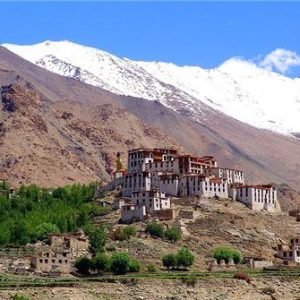
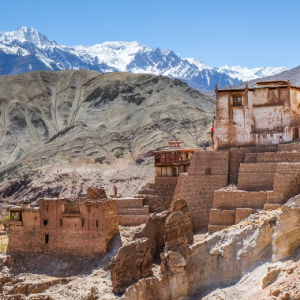
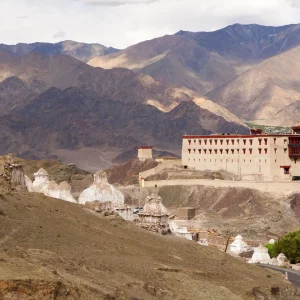
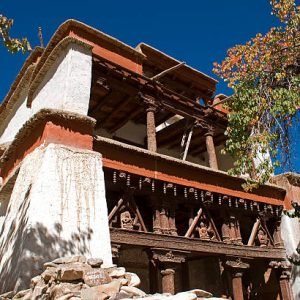
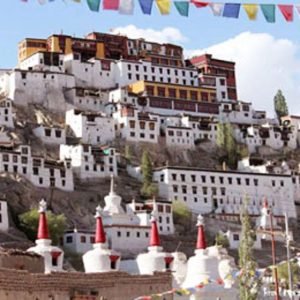
Table of Contents
ToggleSituated in the beautiful landscapes of Ladakh, the Alchi Monastery stands as a remarkable example of the region’s deep roots and rich cultural history, an architectural masterpiece that offers a deeper insight into the evolution of Buddhist traditions in India. For those fascinated by Ladakh, Tibetan Buddhism, and ancient monasteries, Alchi offers a fascinating journey that intertwines spiritual, cultural, and historical narratives. This blog post delves deep into the fascinating history, architecture, and significance of Alchi Monastery, and why it holds an esteemed position in the hearts of travelers, pilgrims, and scholars alike.
History and Origins of Alchi Monastery
Situated about 70 kilometers to the west of Leh, which is the capital of Ladakh, the Alchi Monastery is one of the oldest and most celebrated Buddhist monasteries in the region. Founded in the 11th century by the famous Tibetan scholar and monk, Rinchen Zangpo, its history has gone way back. Rinchen Zangpo is widely known as the “Great Translator” and is credited with many significant contributions toward the spread of Buddhism in the Himalayan region. Many significant Buddhist texts he translated from Sanskrit into Tibetan, and he also promoted the foundation of monasteries in Ladakh.
The monastery of Alchi was one among the various monasteries built during his lifetime by Rinchen Zangpo towards improving the firm roots of Tibetan Buddhism in Ladakh. It was designed not as a place for meditation and ritual but also to preserve and promote Buddhist scriptures. The monastery is especially famous for its beautiful blend of Indo-Tibetan art and architecture, as a testament to the cultural exchange between India, Tibet, and Central Asia during the medieval period.
Architectural Marvel of Alchi Monastery
The architectural style of Alchi Monastery makes it stand out as being quite different from most Ladakhi monasteries. These are generally fortress-like structures, whereas Alchi is laid out like a complex of buildings, with temples, shrines, and courtyards spread across a vast area. Its architecture is an assimilation of Tibetan and Kashmiri styles, thus representing the strong cultural bond between the two regions.
Alchi’s structures are smaller in size compared to some of Ladakh’s larger monasteries, but they are rich in artistic and spiritual value. The main temples of Alchi are decorated with beautiful murals and intricate carvings of various Buddhist deities, scenes from the Buddha’s life, and tantric symbols. These artworks are not only beautiful in their detail but also provide very valuable insights into the Buddhist iconography of the period.
One of the most remarkable aspects of Alchi’s architecture is its preservation of 11th-century murals, which are considered some of the oldest and best-preserved Buddhist paintings in the world. The artwork found within Alchi’s temples serves as a unique blend of Buddhist influences from the Indian subcontinent and the Tibetan plateau, making the monastery a cultural crossroads.
The Alchi monastery complex comprises several major temples, all of which have their own individual characteristics:
Du-khang (Assembly Hall): This is the largest and most impressive temple in all of Alchi. It is essentially the heart of the monastery, holding a large Sakyamuni Buddha statue surrounded by intricately painted murals of different scenes from the life of the Buddha.
Sumtsek Temple: It is well known for its three floors and brilliant frescoes and sculptures. The upper floor holds a grand statue of Maitreya, the Buddha who comes in the future, along with smaller statues of other mighty figures in Buddhist mythology.
Gya-dan Temple: It contains wall paintings preserved to some extent and is dedicated to Avalokiteshvara, the Bodhisattva of Compassion. The temple demonstrates Kashmiri and Tibetan art amalgamated.
Chos-khor Temple: This temple is devoted to the teachings of the Buddha and has paintings that show various Buddhist teachings, mandalas, and deities.
Zanchok Temple: A slightly smaller temple within the monastery, Zanchok is decorated with statues and murals of several Bodhisattvas and Dakinis, reflecting the tantric Buddhist influence that defined the religious life of the monastery.
Buddhist Art and Murals of Alchi Monastery
The murals of Alchi Monastery are among the main attractions that attract art lovers and those interested in spirituality across the globe. The artworks of the monastery demonstrate an ideal fusion of influences from Indian, Tibetan, and Kashmiri arts. The murals, painting the walls of the temples and shrines, show images from the life of Buddha, various bodhisattvas, deities, and celestial beings, all highly detailed and richly coloured.
The most striking feature of the murals in the monastery is their narrative form, for they are more than spiritual representations; they depict various stories of the teachings and the previous lives of the Buddha, as well as myths pertaining to Buddhism. In any case, the brushwork seems to be very intricate, while use of bright colors is more vivid, making these works a feast for one’s eyes.
The paintings in the Du-khang, or Assembly Hall, are noteworthy. Murals here have been preserved remarkably well and are dated back to the 12th century. They represent Buddha in a variety of postures and poses, flanked by bodhisattvas, guardians, and other figures in the pantheon of Buddhism. Even the cosmos, as such, is portrayed here in some murals, with all of hell, earth, and heaven depicted.
The murals in the Sumtsek temple depict the cosmic dance of the deities, even with mandalas on them, which is usual in Tibetan Buddhist art. These murals are important for they represent the fusion that existed between Central Asian and Indian artistic traditions that were dominant back then.
Alchi Monastery: Spiritual Centre for Pilgrimage
It has been built for its architectural and artistic values but holds a deep spiritual aura in itself. Alchi Monastery is one of the very few monasteries within Ladakh that continues to serve as an active center for the Buddhist worship and pilgrimage site. Pilgrims across the globe travel to the monastery for venerating the sacred relics, seeking blessings, and practicing meditation in the tranquil ambience.
One of the important spiritual practices at Alchi is the ritual of circumambulating the main temples. The pilgrims walk around the monastery complex while chanting prayers, spinning prayer wheels, and reciting mantras. In this way, circumambulation becomes a means of accumulating merit and deepening one’s connection with the Buddha and the teachings of Buddhism.
The monastery also invites the guests to join meditation retreats and teachings on spirituality. The ambiance of Alchi perfectly creates the setting for inner peace-seeking individuals who are starting a path of spiritual growth.
Alchi Monastery In The Contemporary Era
Alchi Monastery remains an influential cultural and religious site in Ladakh and has only spread influence recently. The museum of its rich heritage deep spirituality, attracts scholars and artists and pilgrims and all types of tourists. Recently the increasing interest in Alchi monastery led to efforts to ensure preservation of the unique art form and architecture of this place.
Efforts are being made to protect the murals and other artworks from the ravages of time and natural elements. With the help of experts in conservation and restoration, the paintings and statues are being carefully preserved so that future generations can experience their beauty and learn from their teachings.
Alchi Monastery has also gained international fame. In 2000, it was added to the tentative list of UNESCO World Heritage Sites because of its cultural and historical importance. The reason behind the recognition of the monastery is the preservation of old Buddhist art and the role of this monastery in the spread of Tibetan Buddhism.
Best Time to Visit Alchi Monastery
Alchi Monastery, the best time to visit Ladakh is between May to September. Summer months give a relatively moderate climate throughout Ladakh; it has been easier to venture out while traveling. This is because the monastery is easily accessed during this period since all the roads to Alchi Monastery on high altitudes open up.
For those interested in experiencing the spiritual atmosphere of the monastery, visiting during festivals can be particularly rewarding. Alchi hosts several Buddhist festivals throughout the year, including the famous Losar (Tibetan New Year) and other important religious ceremonies, which are celebrated with much fervor and enthusiasm.
Conclusion
Alchi Monastery stands as a beacon of Ladakh’s rich spiritual and cultural heritage. Its stunning murals, unique architecture, and deep historical significance make it a must-visit destination for anyone interested in Buddhism, history, art, or simply the tranquil beauty of the region. Whether you are a spiritual seeker, an art lover, or a history enthusiast, Alchi Monastery offers a unique and profound experience that will leave a lasting impression.
As you wander through the hallowed halls of this sacred monastery, admire the detailed artwork, and walk along its serene courtyards, you are not merely a spectator to the past, but an active participant in the preservation of a living tradition that continues to inspire people across the world. The Alchi Monastery is an eternal treasure-a spiritual oasis in the Ladakh heartland-and a testament to the unyielding strength of art, architecture, and faith.
October - Fall Foliage and a Chill in the Air
In Pahalgam, October marks the beginning of fall and the leaves in the town are succumbed with equally stunning autumn leaves. With the change of season, there is a change in the weather too, as temperatures now range from 8 degree Celsius to 18 degree Celsius. This is one of the months which is one of the most picturesque because the trees are all tinted a golden shade and orange shade making the view amazing.
Greatest Experiences in October:
i. Photography: Try taking photographs while blending in with autumn colors that are evident in the meadows and among Pahalgam’s forests.
ii. Trekking to Kolahoi Glacier: Take a hike embarking towards the Kolahoi Glacier, breathing in the cool autumn air to get an adventurous excursion.
iii. Leisure by the Lidder River: Experience the calmness offered by the Lidder River as the cooler months approach and the autumn leaves are in the background.
November - Pre-Winter Vibes and Solitude
Winter is just around the corner, and temperatures in Pahalgam now vary from -1°C to 9°C in November. For visitors seeking some quiet time before the snow starts falling heavily, this is the most suitable month.
Top Activities to Do in November:
i. Nature Offers Peace: November is perfect for holidays away from the noise, where you can appreciate the peace and quiet of the region.
ii. Explore the temples: Stretch your legs a little and check out the Mamleshwar Temple on your visit along with other sites of history and relevance.
iii. Get Ready for the Winter: This is the ideal time of the year when all the winter sports fans can prepare for their upcoming winter festive season.
December - A Magical Winter Escape in Pahalgam
Pahalgam is a place filling with diverse atmosphere and rich culture which you can visit at any time of the year. Pahalgam is for those searching for adventure and for the spiritual soul as well as for the people who want to get away and just relax in the nature almighty’s finest creations. No matter when you decide to go, this all year travel guide knows how to make your stay in this beautiful area of Kashmir enjoyable and satisfactory.
The middle of December in Pahalgam is peak winters where snow blankets the entire town. The Adventurists and the ones seeking serene escape find solace in the eye catching view. Winters here drop below zero. This makes it a beautiful place to enjoy snow sports, capture photographs and appreciate the silent charm of the Himalayas.
Weather in December:
December temperatures can drop to -4 degrees and rise to 4 degrees which is supposed to be the perfect winter temperature. The heavy and frequent snowfall makes it a sight to behold as every area is completely covered with snow. The snowfall adds to the tranquil surroundings and the blinding light of the snow makes every piece of Pahalgam scenic.
Best Places to Visit in Pahalgam Year-Round
- Betaab Valley – Famous for its scenic beauty and Bollywood film shoots, Betaab Valley is a must-visit during any season.
- Aru Valley – Known for its breathtaking views, trekking opportunities, and tranquil atmosphere.
- Baisaran – A meadow offering panoramic views, often referred to as Mini Switzerland.
- Lidder River – Ideal for fishing, rafting, and picnicking.
- Mamleshwar Temple – A historic Hindu temple dedicated to Lord Shiva.
Conclusion: Why Pahalgam Should Be Your Next Vacation Destination
With its stunning scenery, fresh weather and adventures that are impossible to experience anywhere else, Pahalgam is a place where tourists can come any time of the year. Adventure seekers, spiritually in need, or just wish to soak self in the lap of nature, Pahalgam is the place to be. Let this comprehensive guide assist you whenever you decide to make the journey so as to prepare and present yourself to this picturesque part of Kashmir in the most rewarding way possible.
FAQ's
1. What is Alchi Monastery?
Alchi Monastery is an ancient Buddhist monastery located in the Leh region of Ladakh, India. It was founded in the 11th century by the Tibetan scholar Rinchen Zangpo. Known for its well-preserved murals and intricate architecture, Alchi is one of the most significant Buddhist sites in the region.
2. Where is Alchi Monastery located?
Alchi Monastery is located about 70 kilometers west of Leh, the capital of Ladakh, in northern India. It sits on the banks of the Indus River and is accessible via a road that leads through the beautiful landscapes of Ladakh.
3. Who built Alchi Monastery?
Alchi Monastery was built by Rinchen Zangpo, a prominent Tibetan scholar and translator, in the 11th century. Rinchen Zangpo is credited with establishing several monasteries in Ladakh to promote Tibetan Buddhism.
4. What is the significance of Alchi Monastery?
Alchi Monastery is significant for its preservation of ancient Buddhist art and architecture. The monastery is renowned for its murals, sculptures, and fusion of Indian, Tibetan, and Kashmiri artistic styles. It also holds religious importance as a pilgrimage site for Buddhists.
5. Why is Alchi Monastery famous?
Alchi Monastery is famous for its beautiful murals and ancient frescoes, some of which date back to the 12th century. The monastery’s architecture is unique, combining Tibetan, Kashmiri, and Indian influences. It is also a UNESCO World Heritage site candidate.
6. What are the main attractions of Alchi Monastery?
The main attractions of Alchi Monastery include its stunning murals, ancient wall paintings, and intricately carved statues. Notable temples such as Du-khang (Assembly Hall), Sumtsek Temple, and Gya-dan Temple are also major highlights.
7. When was Alchi Monastery built?
Alchi Monastery was built in the 11th century, with its construction attributed to Rinchen Zangpo, who was instrumental in the spread of Buddhism in the Himalayan region. The monastery reflects the fusion of multiple cultural and artistic traditions of that time.
8. What is the architectural style of Alchi Monastery?
The architecture of Alchi Monastery is a blend of Tibetan and Kashmiri styles. The monastery features a series of temples, shrines, and courtyards adorned with intricate murals, sculptures, and carvings that depict Buddhist deities and teachings.
9. What can you see inside Alchi Monastery?
Inside Alchi Monastery, visitors can view beautifully preserved murals and artwork depicting various Buddhist deities, scenes from the Buddha’s life, and celestial beings. The monastery also houses statues of Buddha, Bodhisattvas, and other important figures from Buddhist mythology.
10. Is Alchi Monastery still an active place of worship?
Yes, Alchi Monastery is still an active place of worship and pilgrimage. Pilgrims from around the world visit the monastery to meditate, circumambulate the sacred halls, and participate in Buddhist rituals.
11. How do you reach Alchi Monastery?
Alchi Monastery can be reached from Leh by road. It is about a 1.5-hour drive from Leh, traveling west along the Indus River. The monastery is easily accessible by car or bike, and there are local taxis available for the journey.
12. What is the best time to visit Alchi Monastery?
The best time to visit Alchi Monastery is during the summer months, from May to September. The weather is mild during this period, and the roads to the monastery are open. Winter visits are difficult due to heavy snow and freezing temperatures.
13. What is the cultural importance of Alchi Monastery?
Alchi Monastery is culturally significant due to its role in the spread of Tibetan Buddhism in the Ladakh region. It serves as a center of religious learning, preserving ancient Buddhist texts, art, and rituals, and reflecting the cultural exchange between India, Tibet, and Central Asia.
14. Is Alchi Monastery a UNESCO World Heritage Site?
Although Alchi Monastery is not yet a UNESCO World Heritage Site, it is on the tentative list due to its cultural and historical significance. Its well-preserved murals and unique blend of Buddhist art make it a site of international interest.
15. Can you stay near Alchi Monastery?
There are a few guesthouses and homestays near Alchi Monastery, offering visitors a chance to experience the local Ladakhi culture. However, for more accommodation options, most travelers stay in Leh and visit Alchi as a day trip.
How to book Tours for Ladakh with Charzan Holidays?
For a seamless and exceptional booking experience, contact Charzan Holidays at reservations@charzan.in or call us at +917889504310.


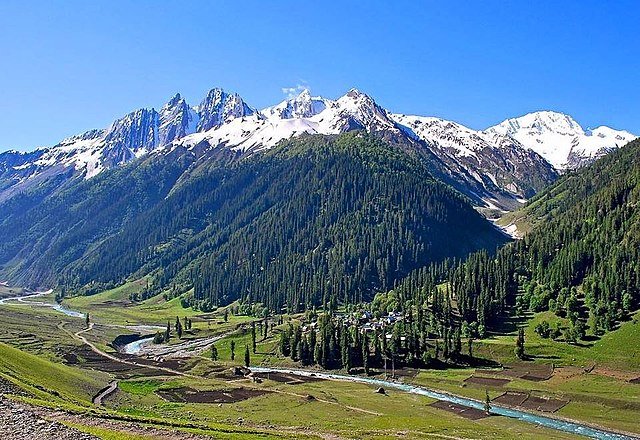

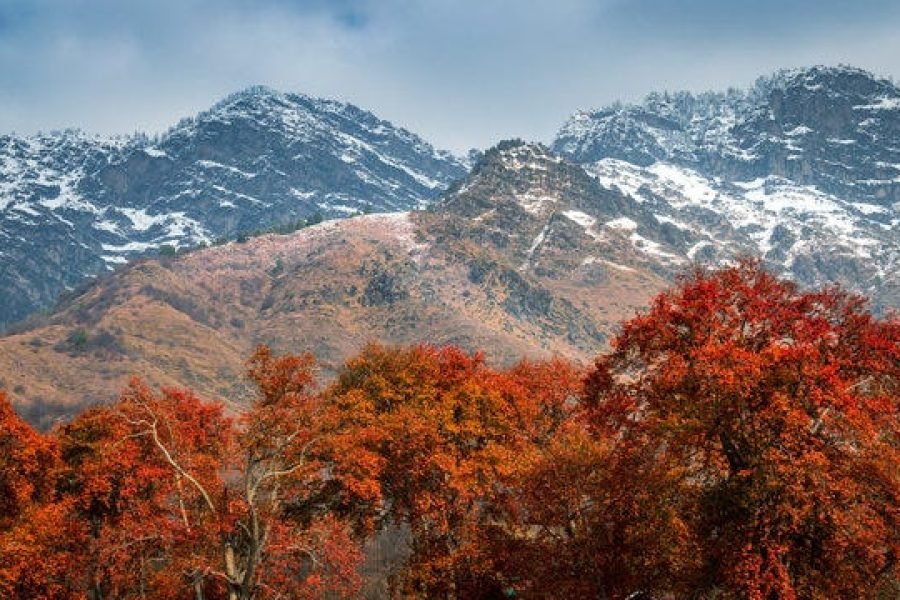

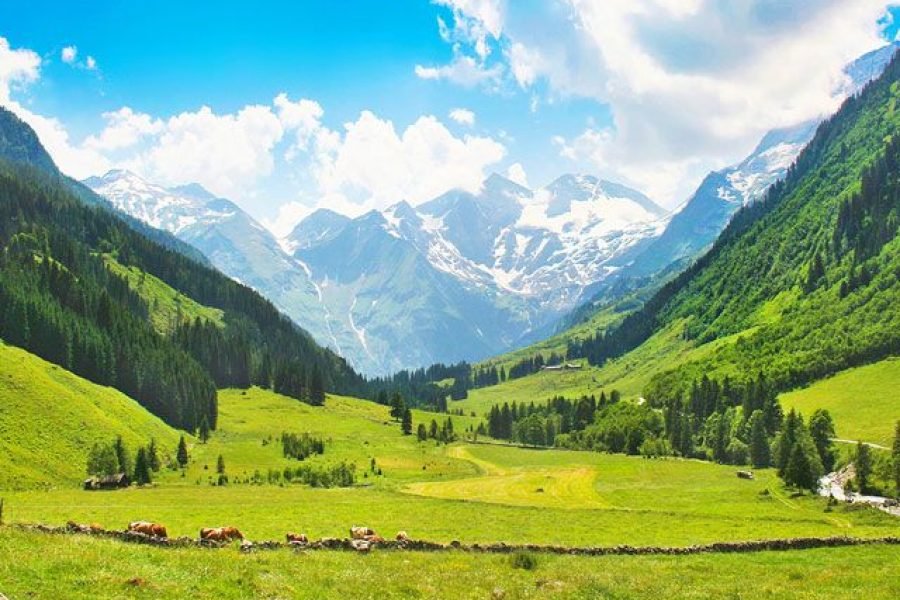
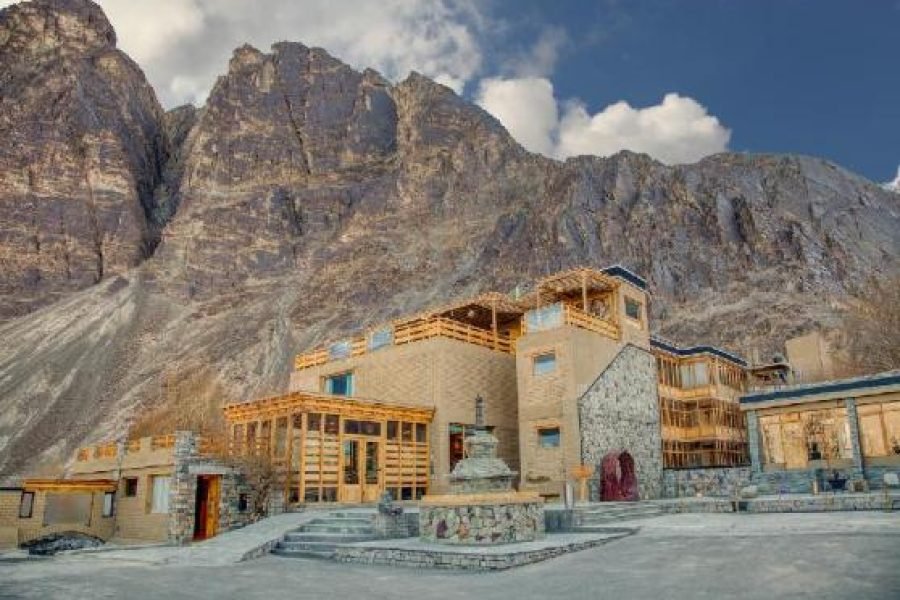
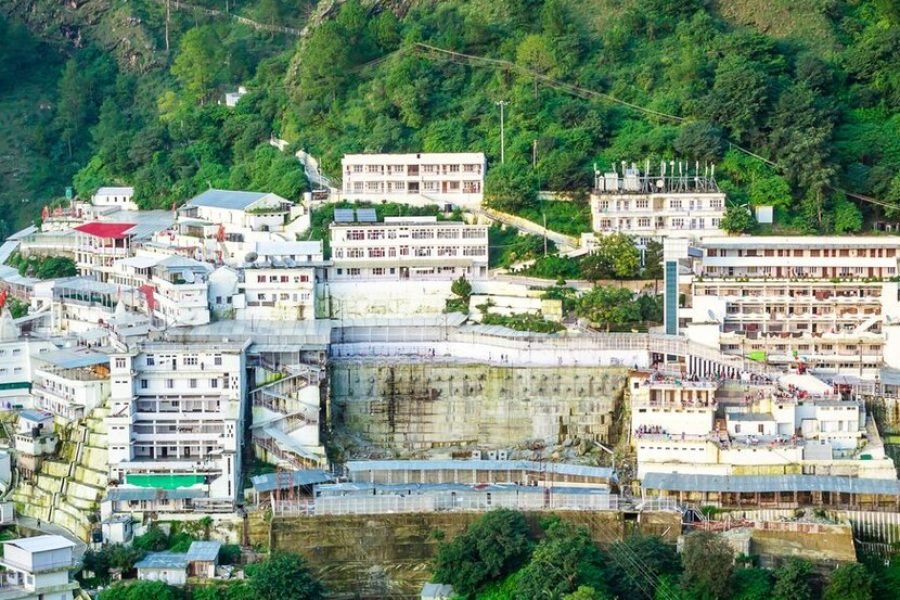
0 Comment